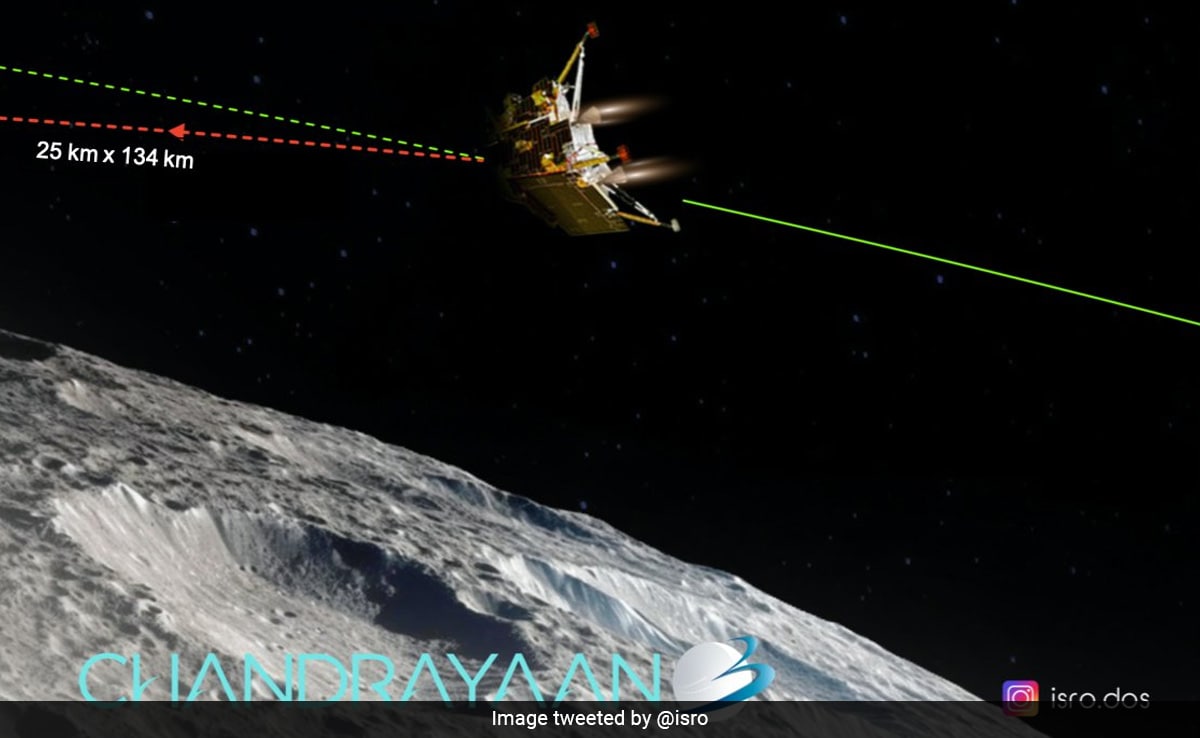Just before the anticipated landing of Chandrayaan-3’s lander Vikram on the Moon’s surface, the Indian Space Research Organisation (ISRO) has announced that it has established a functional two-way communication link with the orbiter from the earlier Chandrayaan-2 mission. Despite the loss of the Chandrayaan-2 lander, the orbiter named PRADAN is currently orbiting the Moon at an altitude of 100 km x 100 km. In a post on the platform known as X (formerly Twitter), ISRO shared that the orbiter has sent a warm welcome message to the Vikram lander, which is on a mission to land on the far side of the Moon.
The ISRO post stated, “‘Welcome, buddy!’ Ch-2 orbiter formally welcomed Ch-3 LM. Two-way communication between the two is established. MOX has now more routes to reach the LM.” This development indicates that the communication channels are open and functional, providing more avenues for data transfer and coordination between the orbiter and the lander.
Vikram lander captured images of various craters on the unexplored lunar south pole region
The space agency also announced that the live coverage of the landing event is scheduled to begin at 5.20 pm on August 23. Prior to its descent, the Vikram lander captured images of various craters on the unexplored lunar south pole region, which remains hidden from Earth’s view. These images, taken last Saturday, highlighted craters such as Hayn, Boss L, Mare Humboldtianum, and Bel’kovich. ISRO shared these images on their social media platform.
K Sivan, the former chief of ISRO and the leader of the previous Chandrayaan-2 mission, expressed confidence that this upcoming mission will be a “grand success.” He spoke to the news agency ANI, emphasizing the anxiousness surrounding the mission’s outcome.
The live coverage of the landing event will be broadcasted on ISRO’s website, YouTube channel, Facebook, and the public broadcaster Doordarshan
Recently, the lander module of the Chandrayaan-3 spacecraft successfully separated from the propulsion module. Following this separation, the lander underwent critical “deboosting” maneuvers, which resulted in its descent to a slightly lower orbit in preparation for the upcoming landing attempt. Named after Vikram Sarabhai, a pioneer of the Indian space program, the Chandrayaan-3 lander continues the legacy of space exploration in India.
Also Read: TCS onboards 44,000 freshers in FY23, honors all job offers
Keep watching our YouTube Channel ‘DNP INDIA’. Also, please subscribe and follow us on FACEBOOK
